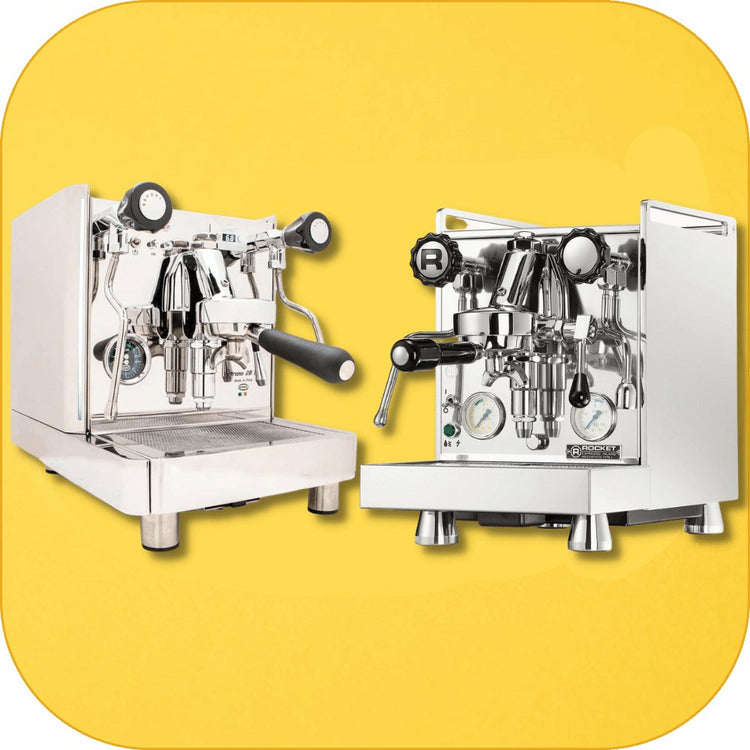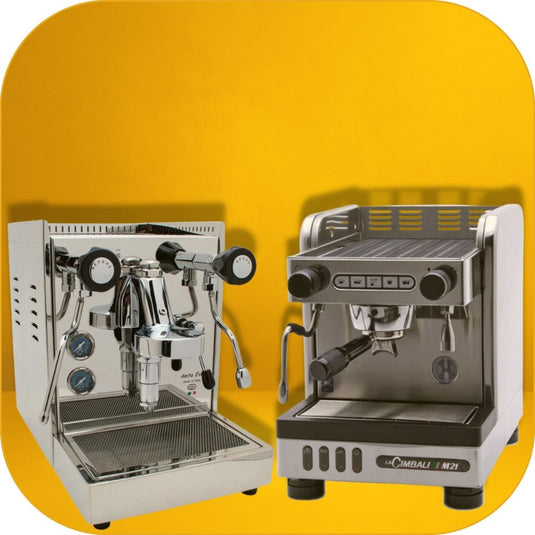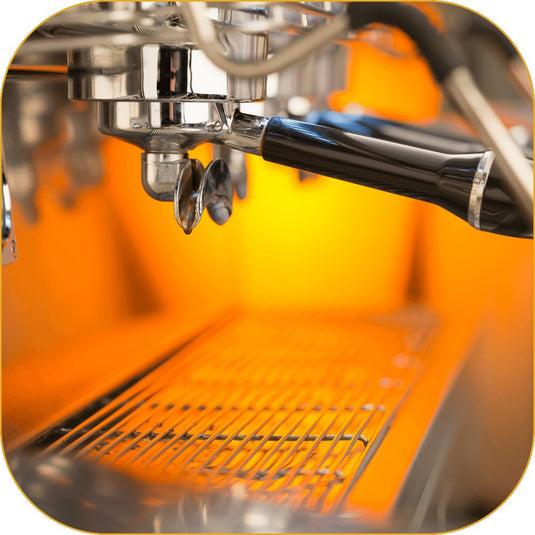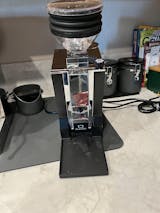Dual Boiler vs Heat Exchanger

Espresso machines aren’t just for espresso. They’re also for making steam, and lots of it. Sure, espresso is a great drink by itself, but it is the lattes and the cappuccinos that really conquered the world.
And making quality dry steam isn’t an easy feat. There are many different parts to espresso machines that contribute to the amount and quality of steam they can produce. The two best espresso machine types for steam output are heat-exchangers and dual boilers.
Let’s take a look at what each of these are and then run down their different capabilities.
Dual-Boiler
This is the Occam’s Razor approach. An espresso machine needs to have an output of two things:
- Hot water
- Steam.
So you have one boiler for heating up water and another for steam. Easy, simple; elegant. Why, though? Why have two boilers full of water?
Well, to make steam you need to actually boil the water. That would mean going over the ideal brewing water. Old espresso machines would simply make coffee with boiling water, which makes coffee, sure, but it’s a very bitter coffee.
So the solution was to have the first boiler heating the water up to just a few degrees below its boiling point, and another one with constantly boiling water to have a big reservoir of steam.
You can read more in depth about dual boilers here.
Heat-exchanger
The heat-exchanger is a little more complicated. It consists of just the one (big) boiler, which is set to boil water continuously, thus having both hot water and steam available. That way, whenever you need steam, you can use it. But what happens when you need water?
That’s when the magic happens. There is a certain mechanism that introduces cold water, which is usually stored in a water tank, and it comes into contact in a tube which is between the boiler and the group head.
Sure enough, there is a delicate thermometer that takes the temperature of the water at this point and once it has reached the perfect temperature, then it goes to the grouphead.
Heat-exchanger vs. Dual Boiler: Which is better?
Put simply, each of these has its strengths.
In terms of size, for example. A dual boiler machine will inevitably be much bigger. In fact, it can almost be twice the size as a heat-exchanger machine. This is because the boiler tends to need a lot of space to operate, even if the part itself isn’t really that big. That means that two boilers need two times as much space.
A heat-exchanger, on the other hand, is a much more compact machine. Espresso machines are generally very big and chunky and, unless you have a lot of space for them, this can present a problem whether you want them for your home, business, or office.
Heat-exchangers, however, can lack both in the quality and quantity of their steam. Because there isn’t a whole boiler dedicated to just steam, these are known to only be able to give you enough steam for a few coffees at a time, no more. A dual boiler will have almost unlimited amounts of steam. Some can even make you wait up to a whole minute before being able to use the steam wand, which can be quite frustrating.
Dual boilers, for all their good qualities, are also quite expensive. Boilers are one of the most expensive components of the espresso machine, so it makes sense that two of them would make them pricier. Heat-exchangers, however? All they need is a heat sensor, a dedicated tube, and that’s about it.
Conclusion
While it is hard to say that one is better than the other, you can see that each has its own strengths and even though that doesn’t make it easy to make a decision, it definitely makes it more fun finding a machine that’s best for you.
What's your preference? Let us know below!




















I’m planning to start espresso coffee or latte shop
Interested in home espresso machine.